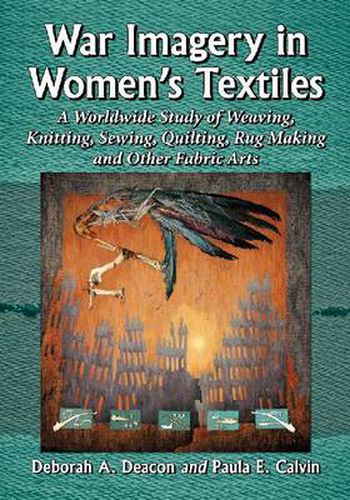Readings Newsletter
Become a Readings Member to make your shopping experience even easier.
Sign in or sign up for free!
You’re not far away from qualifying for FREE standard shipping within Australia
You’ve qualified for FREE standard shipping within Australia
The cart is loading…






Through the centuries, women have used textiles to express their ideas and political opinions, creating items of utility that also function as works of art. Beginning with medieval European embroideries and tapestries such as the Bayeux Tapestry, this book includes works from the United States, Canada, Latin America, Asia, the Middle and Near East, and Central Asia. It examines the ways in which women around the world have recorded the impact of war on their lives using traditional fabric art forms of knitting, sewing, quilting, embroidery, weaving, basketry and rug making. The works are analyzed in terms of content and utility, and cultural and economic implications for the women who created them are discussed.
In each case traditional women’s work served to document the upheaval in their lives and, in many cases, supplemented their family income. By creating textiles that responded to the chaos of war, women developed new textile traditions, modified old traditions and created a vehicle to express their feelings.
$9.00 standard shipping within Australia
FREE standard shipping within Australia for orders over $100.00
Express & International shipping calculated at checkout
Through the centuries, women have used textiles to express their ideas and political opinions, creating items of utility that also function as works of art. Beginning with medieval European embroideries and tapestries such as the Bayeux Tapestry, this book includes works from the United States, Canada, Latin America, Asia, the Middle and Near East, and Central Asia. It examines the ways in which women around the world have recorded the impact of war on their lives using traditional fabric art forms of knitting, sewing, quilting, embroidery, weaving, basketry and rug making. The works are analyzed in terms of content and utility, and cultural and economic implications for the women who created them are discussed.
In each case traditional women’s work served to document the upheaval in their lives and, in many cases, supplemented their family income. By creating textiles that responded to the chaos of war, women developed new textile traditions, modified old traditions and created a vehicle to express their feelings.